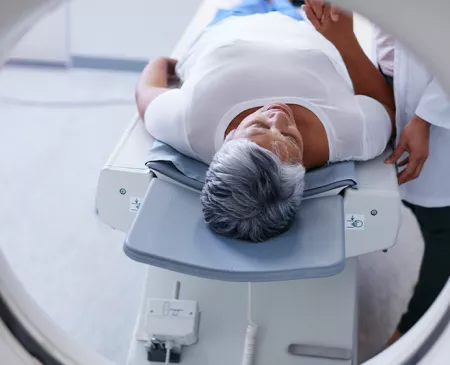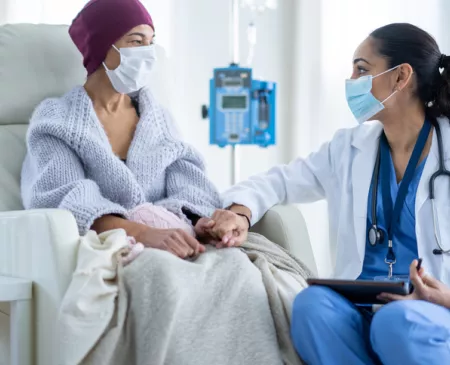The Buzz This Week
Last month, two high-profile public figures under the age of 50, Olivia Munn and Kate Middleton, announced cancer diagnoses—highlighting a concerning trend of increasing early-onset cancer.
While age remains the greatest risk factor for cancer in the US, 12% of new diagnoses are attributed to people under age 50. The number of cases is rising and is projected to continue at least through 2030. A study in BMJ Oncology found that between 1990 and 2019, the global incidence of early-onset cancer increased by nearly 80%. Associated deaths have increased almost 30%.
Simultaneously, cancer death rates among older adults are declining. Experts attribute the reduction in cancer deaths among older adults to additional screening and treatment options, as well as smoking cessation. That said, the overall increase in cancer incidence between 1995 and 2020 for younger adults is troubling and an increasing focus for cancer research. The population of younger adults has seen a 1% to 2% rise in cancer incidence every year since the 1990s.
Certain types of cancer have increased more rapidly than others among younger adults. For instance, early-onset colorectal cancers have increased roughly 2% per year since the 1990s. Colorectal cancer is now the top cause of cancer death among men under 50, and second among women under 50. The first is breast cancer. Early-onset breast cancer has increased nearly 4% per year since 2016. Other common cancers (including prostate, endometrial, and cervical cancers) have also been increasing among younger adults.
Why It Matters
As rates rise, researchers are trying to pinpoint what may be causing the increase in early-onset cancer, but a complex combination of genetics, lifestyle, and environment make that challenging. Processed food, lack of exercise, excessive consumption of alcohol, and exposure to environmental pollutants may all contribute to the trend.
An additional difficulty in identifying why incidence rates are increasing is that environmental and lifestyle factors could date back to exposure at a young age or even in utero. Some scientists wonder how much disruptions to the microbiome (including dietary changes, use of antibiotics, and increases in other chronic diseases) factor in.
Gathering reliable and consistent data for large populations over decades to draw conclusions is extraordinarily challenging. Christopher Lieu, MD, an oncologist at the University of Colorado Cancer Center in Aurora, CO, said in an interview, “The list of things that impact the microbiome is so extensive. You’re asking people to recall what they ate as kids, and I can barely remember what I ate for breakfast.”
Diversifying and increasing the size of studies, and comparing data between disparate populations and countries, may help to identify risk factors. While we don’t expect to discover the root causes of these increased rates in the immediate future, changes to screening guidelines can help identify early-onset cancer sooner. For example, the American Cancer Society changed screening guidelines from age 50 to age 45 for colorectal cancer in 2018. But for individuals with high risk (like family history), health leaders recommend screening 10 to 15 years before the age at which the first family member was diagnosed.
Similarly, in 2023 the US Preventive Services Task Force (USPSTF) lowered their recommended mammography screening age for breast cancer from 50 to 40, but women with family history should begin sooner. Guideline recommendations for other cancers may shift as well.
However, recommendations must be weighed against cost and access burden. Less invasive screening measures (including at-home tests like Cologuard and early detection blood tests) can be cost-effective options that enable younger people to screen for earlier detection.
Younger patients who do get cancer have to think differently about their treatment options than patients who receive a diagnosis later in life. Questions they must consider include: How will my diagnosis or treatment impact my fertility? What long-term side effects do I need to be aware of? How will I talk about my diagnosis with my young children? Because early-onset cancers can also be more advanced, they may require more aggressive treatment. Treatment options may need to evolve to better meet the lifestyle, needs, and concerns of patients with early-onset cancers.
The evidence-based advice to eat nutritiously (increasing fiber and decreasing processed meat), exercise, and reduce or eliminate tobacco and alcohol are certainly beneficial and may reduce some risk. But early-onset cancer causes are complex, with many unknowns. People who have risk factors should talk to their provider, and seek screenings and other preventative measures sooner, since early detection often leads to better outcomes.
RELATED LINKS
Time:
Why are so many young people getting cancer? It’s complicated.
New York Times:
More young people than ever will get colorectal cancer this year
Nature:
Why are so many young people getting cancer? What the data say
Editorial advisor: Roger Ray, MD, Chief Physician Executive.







